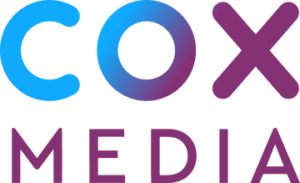Real-Time With Cox Media’s Zeigler On ‘Programmatic TV’ [Breaking News]
Programmatic television has been picking up steam in recent months. Supply-side platforms supporting automated TV selling have been cropping up and raising funds, an entire programmatic TV marketplace was launched last month and the overall vibe surrounding “programmatic TV” has increased.
Real-Time Daily spoke with Mike Zeigler, VP of operations at Cox Media — one of the largest broadcasting companies making noise in the space — about programmatic TV.
Real-Time Daily: Let’s put this conversation in perspective to begin. How do you define “programmatic TV”?
Mike Zeigler: Programmatic TV is simply automation of the processes that help marketers and ad buyers find their target audience. Today programmatic TV is mostly about platforms that connect multiple inventory owners (broadcast stations or MVPDs) to campaign planning systems as a means to facilitate ease in ordering.
However, programmatic is quickly evolving to leverage data and sophisticated campaign planning techniques to help advertisers target and buy audiences across screens and programming options. Data opens the door for new measurement techniques and new pricing models such as impression based ad sales.
RTD: What is the difference between programmatic for TV and programmatic for digital?
Zeigler: It can be confusing because essentially programmatic TV is inspired by data-driven exchanges that emerged in the digital world first. Digital inventory is networked and created on demand with very short lead times for delivering content. Oftentimes, digital is sold through real-time bidding (RTB) and exchanges.
That’s not what programmatic TV is about – we think it’s about leveraging programmatic and data as a way to aggregate audiences for more effective campaigns while also relying on programmatic platforms to make the process efficient and scalable.
RTD: Can programmatic TV ads be converted to sales, and is that measurable? Who measures it?
Zeigler: Yes. Metrics are changing, we’re moving from CPP to CPM, and there is an opportunity to resolve how audiences are measured both from a qualitative and quantitative perspective. Essentially, this is about finding new ways to bring transparency and accountability to media buys. We welcome that because video advertising is the most engaging advertising medium available.
RTD: How much linear TV inventory was Cox Media selling a year ago? What about today? Where do you see it in a year?
Zeigler: We make all of our inventory available for sale to our programmatic partners. We don’t carve or partition inventory. Everything is sold on a rate rules basis — meaning the highest value order gets the spot.
We’ve experienced near 100% growth in the amount of business we’re transacting in an automated manner and we don’t expect that to slow down. Increasingly, we’re talking to brands and agencies about private marketplaces. The ability to publish inventory availability and selectively serve high value clients through these new marketplaces is exciting.
Private marketplaces like the partnership we announced with Magna and AudienceXpress earlier this year move the conversation with agencies from terms purely about automation to a collaborative arrangement where we are sharing data about inventory availability and audiences delivered; essentially we are curating inventory to make campaigns more effective.
RTD: How does that compare to traditional sales? What’s the balance like between programmatically-sold and traditionally-sold, and how do you expect the balance to change?
Zeigler: Cox Media’s feet on the street in our local market are our most valuable asset. It’s easy to see the emergence of computer-driven sales models as a threat to traditional sales, but we don’t believe that’s what is happening. This is essentially a new sales channel that brings new management challenges and opportunities.
Programmatic technology can empower our sales consultants to access and acquire inventory that we previously couldn’t sell. Already today, we have deals in place with programmatic partners like TubeMogul that extend our reach beyond serving video ad buys on cable — we can now acquire digital video and potential broadcast inventory as a wholesale buyer. That’s exciting because our local sellers are now at the forefront of helping local ad buyers create multiscreen campaigns leveraging the same sophisticated (programmatic) technology that national ad buyers are using.
RTD: When you sell the linear TV ads via programmatic, is there really any difference other than how you are trading the inventory? Is it cheaper? Is it really more targeted, or are you basically getting the same buyers that would’ve bought the space traditionally?
Zeigler: Programmatic definitely brings more liquidity and volume to our business. Our sellout levels have never been higher. The buys today are more transparent as these platforms dig deeper into the audiences delivered.
Even so, we’re moving the traditional business towards a new vision. This isn’t flip-a-switch and we’ll have networked, household addressable TV ads in digital style marketplaces with absolute clarity on viewer engagement — it’s a process that takes time. It’s important to see this as an evolutionary process that starts with the business we have today and then every month moves closer toward that vision.
This is disruptive and innovative very much in a classical sense — we saw it first start with clients who place high frequency buys and now starting to edge closer to more premium, planned business. The most exciting part about this is that programmatic is being driven by the buy-side and sell-side working together collaboratively. We’re working together to make advertising better — easier to buy and ultimately more effective.
Source: MediaPost’s Real-Time Daily Blog
Connect with a Marketing Expert
Share Post On Social
Related Insights
Connect With Your Local Marketing Expert
You know your business. We know advertising. Together, we can bring your business to more people. Contact a member of our team today. We’d love to help you grow.

